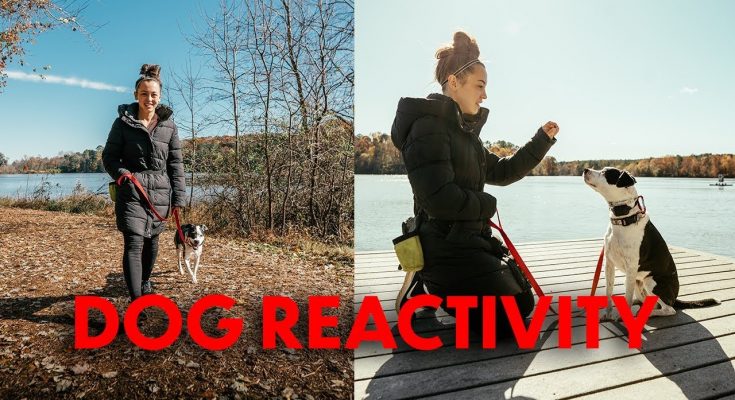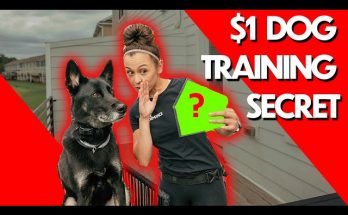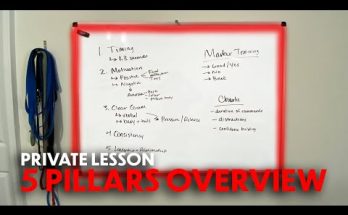In this episode, Natalie takes her Board & Train, Evie, out on a structured walk around a nearby lake. The focus is on creating space for Evie as they encounter other dogs along the trail.
For more Dog Training Tips & Tricks:
►Get Your Dog Trained – http://www.canineperformancecoach.com
►Canine Performance Podcast
https://open.spotify.com/show/7C8eH6P…
►INSTAGRAM @canine_performance
#reactivedog #dogtraining #dogtrainer





Awesome video. Could you do more videos about reactivity in a city environment with little space to escape? There us lots of reactive dogs in my neighborhood but when the boardwalk is your only space, giving dogs additional space isn’t always an option.
hola 😘
Thank you for the video! I was wondering when exactly were you pressing the button of an e collar in the part of a video with the dog on a path? Were you pressing it every time you changed direction?
What kind of e collar are you using now? I know your previous videos you were using the mini educator.
C Perez i think it’s a pro educator. It’s still from ecollar technologies but a different remote shape
Very nice, , my pitty girl very dog reactive so , 2 things, …… the e collar probably won’t help, and 2….. might just accept that that’s just the way he she is and just manage and empathize with them. The emotions are strong. My girl has dog friends, she is just high strung
Do u think these training can work without e collar och prong collar, with just a normal collar?
Every dog is different some only believe in positive reward training, some use a mix like Natalie. I utilized a martingale collar when I first got my dog but switched to a regular and also have an e-collar as shes highly reactive as well.
It can be done also with just a leash and a collar. The ecollar and prong just make communication easier. Principles are the same though.
Wow this is what my trainer is having me do with my dog, it’s really been helping. Also, on the walk I let him know when it’s ok to roam and sniff (on the leash of course), I say Free and let him be a doggie 💜
Absolutely love the videos keep it up dont stop.
Either a E-Collar OR a prong. You don’t need both.
They are used for different things. When I trained my reactive dog, it was both, until only ecollar, then buckle.
@Martine watch the video.
But both tools can be used for different uses, basically.
In reactivity, with the method I was working on with my reactive dog was, in a quick summary: eyes lock on dog, forget to respond to name/ignore owner, fair correction on prong, look back, reward/good feeling. This was even under threshold.
Ecollar was “a tap on the shoulder” in case we didn’t have a way of escaping a passing dog and he “forgot” to properly respond (with or without prong correction) to my words.
After that point, ecollar was a management thing for like a year for on and off work, and now he is completely naked and doesn’t stare or get anxious at the sight of dogs around him.
I cant put in words the whole method without analyzing but I think I made it understandable. My second dog, a belgian malinois, takes corrections much different, as I have taught her any correction means try again and dont cower from stress.
Highly recommend using a trainer if anyone who reads this is interested in tools. Proper equipment is just the tip of the iceberg.
Im pretty sure an professional trainer like her knows what she is doing
This is how I taught my reactive dog as well. From lunging, no engagement, selective hearing, whining, pulling to a dog that can be happily neutral around other dogs at reasonable distances. Was hard figuring it on my own, but bravo to putting this out there, and showing also the uses of the tools.
This is the BEST explanation of how to work with a reactove dog that i have seen on the internet. THANKS!
This was fantastic video
Can I ask you which e collar you use? I am not liking the one I have now because it requires me to look at it to change levels and it is a pain!
Love this. Learning how to stop my dog from loading was the most important step to stopping his reactivity.
When I hike with my dog Milo he likes to pull on the leash and sniff, I’ll try to get him to heel but especially when we first get out he wants to sniff. I try to let him do so to decompress and have a “freedom walk” but when we pass people I try to keep him in heel position but he pulls and I often don’t have an option of where to go. What should I do?
YOU AND THOM DAVIS COULD BE THE AMBASSADOR OF THIS TOOL ‘PRONG COLLAR’!
Poor dog
Hi, I have a question I have a reactive dog and I’m gonna try your method on her should I put a muzzle on her just incase she tries to bite another dog. I only ask because its my first time bringing her to an area with a lot of dogs.
Always better to be safe than sorry
@Katie McKnight true I was going to put a muzzle on her anyway I just wanted a confirmation.
Good vid thanks you for the info 👍
Do you guys have a video on training a reactive dog without a ecollar?
what happens if you have to go to the vet clinic with a lot of dogs? do we just have to suck it up?